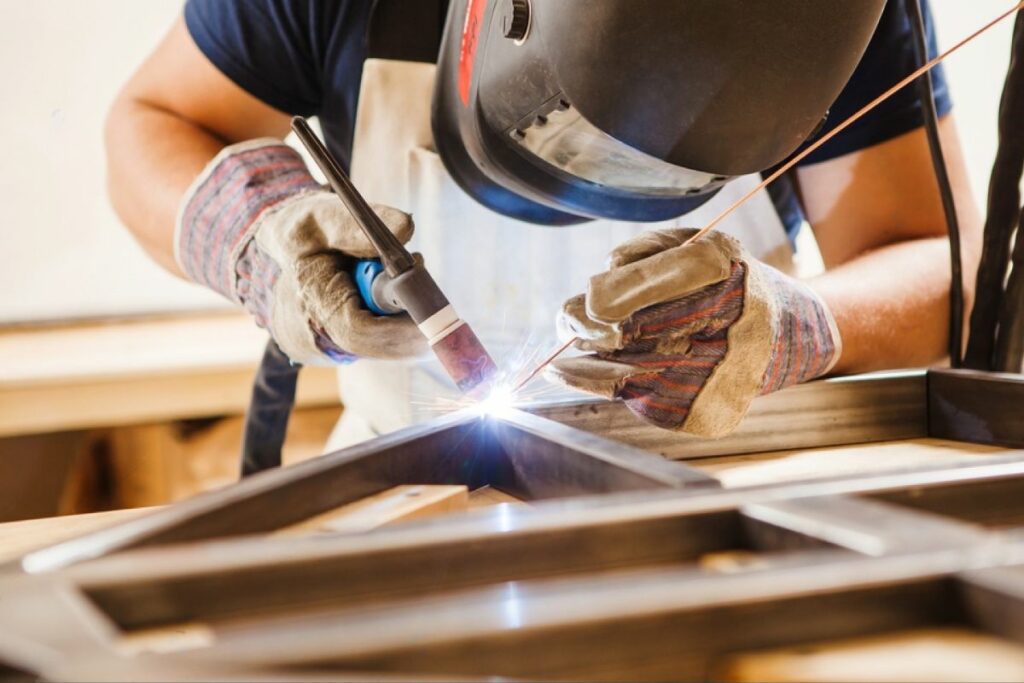
Starting to learn welding can be tricky and overwhelming with the voluminous amount of information found online and taught in real practice. However, learning the basics regarding its types could be uncomplicated. This makes it easier to understand the common welding types and their level of complexity. More so, this also gives you a perspective as to how and when they are best used.
In this blog, we put together the different types of welding and their ideal use.
This simple type of welding is also known as Gas Metal Arc Welding (GMAW) and can easily be accomplished especially by new welders. Making use of this type of welding requires a welding gun, a power supply, a wire feed unit, and a shielding gas supply. This involves a speedy process wherein the filler metal is fed through the wand while gas is driven out around it to protect it from outside elements. In addition, this form of welding also makes a protective gas bubble which protects the weld from outside contamination.
MIG welding is ideally used in industrial processes. This high-production manufacturing includes ship and boat parts, mining equipment, home furniture, computer parts, 3D printed metal objects, and other repairs or assemblies in the automotive industry.
The first type of welding is TIG welding, also known as Heliarc and gas tungsten arc welding (GTAW). This is one of the few forms of welding that does not necessarily require filler metal – instead, it can be done by using only two metals. If one wants to add filler metal, it must be fed by hand. This welding type also forms visually pleasing welds that do not need a cleanup. Not only that but TIG welding is also immensely hot which would make it challenging to weld without using the proper techniques. The process is also done manually wherein one needs a welding torch, a constant-current welding power supply, a grinder, and other filler metals.
As this type of welding is done manually, you’ll also have to pick between hand control or pedal control. But most welders use both of their hands for TIG. With these types of characteristics, this form of welding is best suited for experienced welders.
TIG welding is good for industrial equipment such as sheet metals and has contributed greatly to processes forming automotive, aviation, and aerospace vehicles including the Internal Space Station as well as metal sculptures, industrial fixtures, simple repairs, and furnishings.
In this type of welding, a stick welder is needed along with an electrode and other slag-removing tools. This form of welding can also use different sizes of the electrode and produce welds on thick materials such as cast iron but is not suitable for thin materials. It uses an electrode stick that serves as the role of filler metal. An arc connects the end of the stick and the base metals as it the electrode melts into filler metal thus creating the weld.
The process of stick welding can be used outdoors even during rainy and windy weather. Since this is a highly skilled form of welding, it is best performed by skilled welders. Stick welding is ideal for structural construction weldings, roads, shipbuilding, buildings, and bridges. It can also be used in manufacturing, field repair, and steel fabrication.
Arc welding is a form of welding process that uses an electric arc to create heat in melting and joining metals. Its electric power supply varies from direct current (DC) to alternating current (AC). Such power supply creates heat of around 6500°F which melts the metal. The arc can be guided along the line of the join manually or mechanically while the electrode carries the current and melts into the weld pool. In arc welding, the welding area can be protected by shielding gas, slag, or vapour.
There are various types of arc welding including Metal Active Gas (MAG), Shielded Metal Arc Welding (SMAW), and Fluxed Core Arc Welding (FCAW), hence, it also entails different ideal uses. MAG welding is ideal for low-alloyed construction steels and can also be used in car bodywork services. FCAW, on the other hand, is ideal for shipbuilding, construction, and the mechanical industry and can be used on stainless steel, duplex steel, and carbon alloy.
As with most things, no one can really advance without first having a good grasp of the basics. This much is true even for welding. Taking the time to learn the basics and eventually master them, in definition, theory, and practice will get you far should you want to pursue expertise and longevity in the trade. Many people often want to be pros. Getting started with the basics is how one puts in the work.